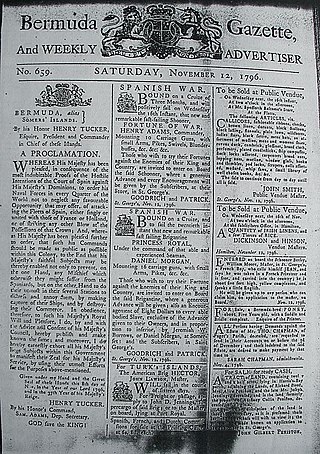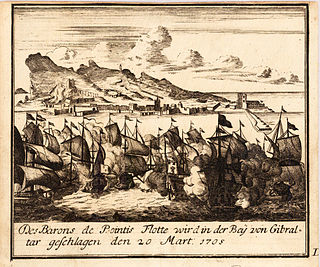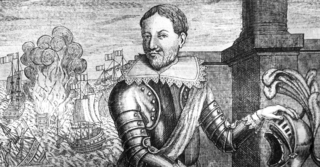
Piet Pieterszoon Hein was a Dutch admiral and privateer for the Dutch Republic during the Eighty Years' War. Hein was the first and the last to capture a large part of a Spanish treasure fleet which transported huge amounts of gold and silver from Spanish America to Spain. The amount of silver taken was so big that it resulted in the rise of the price of silver worldwide and the near bankruptcy of Spain.

The Battle of Nieuwpoort, was fought on 2 July 1600 during the Eighty Years War and the Anglo-Spanish war in the dunes near Nieuwpoort. The Anglo-Dutch companies met the Spanish veterans head on which, although their left flank nearly broke, were able to assail them with both infantry and cavalry. The Spanish gradually scattered in all directions and left their guns on the field.

Ostend is a coastal city and municipality, located in the province of West Flanders in the Flemish Region of Belgium. It comprises the boroughs of Mariakerke, Raversijde, Stene and Zandvoorde, and the city of Ostend proper – the largest on the Belgian coast.

Commerce raiding is a form of naval warfare used to destroy or disrupt logistics of the enemy on the open sea by attacking its merchant shipping, rather than engaging its combatants or enforcing a blockade against them.


The Anglo-Spanish War (1585–1604) was an intermittent conflict between the Habsburg Kingdom of Spain and the Kingdom of England. It was never formally declared. It began with England's military expedition in 1585 to what was then the Spanish Netherlands under the command of the Earl of Leicester, in support of the Dutch rebellion against Spanish Habsburg rule.

Jacob Collaart or Collaert was a Flemish admiral who served as privateer and one of the Dunkirkers in Spanish Habsburg service during the Dutch Revolt.
Jacques Colaert or Jacob Collaart was a Flemish privateer who during the Dutch Revolt sailed in royal service as one of the Dunkirkers.

Bernard Desjean, Baron de Pointis was a French admiral and privateer.

During the Dutch Revolt (1568–1648), the Dunkirkers or Dunkirk Privateers were commerce raiders in the service of the Spanish monarchy and later the Kingdom of France. They were also part of the Dunkirk fleet, which consequently was a part of the Spanish monarchy's Flemish fleet(Armada de Flandes). The Dunkirkers operated from the ports of the Flemish coast: Nieuwpoort, Ostend, and Dunkirk. Throughout the Eighty Years' War, the fleet of the Dutch Republic repeatedly tried to destroy the Dunkirkers. The first Dunkirkers sailed a group of warships outfitted by the Spanish government, but non-government investment in privateering soon led to a more numerous fleet of privately owned and outfitted warships.

Jan Jacobsen was a Flemish naval commander and Dunkirker during the Eighty Years' War. He became a posthumous hero when, after battling an enemy fleet for over 13 hours, he destroyed his own ship rather than surrender.
Pedro de la Plesa was a 17th-century Spanish privateer. He served as a Dunkirker in the service of the Spanish Crown during the Eighty Years' War. He and Juan Garcia gained notoriety for abandoning their comrade Captain Jan Jacobsen in his final naval battle against the Dutch Republic.
Juan Garcia was a 17th-century Spanish privateer. He was among a number of Spaniards who served the Spanish Crown as Dunkirkers during the Eighty Years' War. Both he and Pedro de la Plesa were caught by the Dutch Republic naval force as they attempted to break through a blockade of Dunkirk. He and de la Plesa were accused of leaving Captain Jan Jacobsen to face nine pursuing Dutch warships alone.

The Battle of Cape St Vincent of 1641 took place on 4 November 1641 when a Spanish fleet commanded by Don Juan Alonso de Idiáquez y Robles intercepted a Dutch fleet led by Artus Gijsels during the Eighty Years' War. After a fierce battle two Dutch ships were lost but the Dutch claimed only a hundred of their men were killed; the Spanish fleet also lost two ships but over a thousand dead. The damaged Dutch fleet was forced to abandon its planned attack on the Spanish treasure fleet.

Johan Evertsen was a Dutch admiral who was born in the 17th century.

The siege of Rees of 1599, also known as the relief of Rees, was an unsuccessful attempt by Protestant-German forces led by Count Simon VI of Lippe, and Anglo-Dutch forces sent by Prince Maurice of Nassau, commanded by Philip of Hohenlohe-Neuenstein and the Count Ernst of Solms, to capture the strategic stronghold of Rees, Lower Rhine, Duchy of Cleves from the Spanish forces of Don Francisco de Mendoza, Admiral of Aragon, second-in-command of the Army of Flanders, and Governor Don Ramiro de Guzmán, between 10–12 September 1599, during the Eighty Years' War and the Anglo-Spanish War (1585–1604). This Spanish victory was part of the campaign of Francisco de Mendoza and Cardinal Andrew of Austria of 1598-1599, also called the Spanish Winter of 1598-99.

The siege of Sluis (1604), also known as the Sluis campaign or the Battle of the Oostburg Line, was a series of military actions that took place during the Eighty Years' War and the Anglo–Spanish War from 19 May to 19 August 1604. A States and English army under Prince Maurice of Orange and Horace Vere respectively crossed the Scheldt estuary and advanced on land taking Cadzand, Aardenburg, and IJzendijke in the Spanish Netherlands. This soon led to the culmination of the siege of the Spanish-held inland port of Sluis.
This timeline of the history of piracy in the 1600s is a chronological list of key events involving pirates between 1600 and 1609.

The years 1599–1609 constituted a phase of in the Eighty Years' War between the Spanish Empire and the emerging Dutch Republic. It followed the Ten Years (1588–1598) that saw significant conquests by the Dutch States Army under the leadership of stadtholders Maurice of Nassau and William Louis of Nassau-Dillenburg, and ended with the conclusion of the Twelve Years' Truce (1609–1621) on 9 April 1609. The 1599–1609 period was generally marked by a stalemate; the well-known Battle of Nieuwpoort (1600) brought the Dutch a tactical victory without long-term gain, while Spanish conquests in the Siege of Ostend (1601–1604) and Spinola's 1605–1606 campaign were effectively balanced out by the Dutch naval triumph in the Battle of Gibraltar (1607) and the Spanish state bankruptcy that same year. Financial troubles were amongst the primary motives that prompted the Dutch, and even more so the Spanish, to head to the negotiating table for a ceasefire.